Opening Remarks
Malachi Charbonneau: Well, everyone, thank you for joining us in this webinar series. My name is Malachi Charbonneau, and I’m the General Manager here at medaptus. I’m joined by a couple of my colleagues, who I’ll introduce in a moment. Today, we’ll be discussing a topic that is gaining traction across health systems: EHR workflow customization —whether to pursue a DIY solution or a vendor partnership. We’ll explore the pros and cons of each approach and provide real-world examples to help you decide what’s best for your organization.
About medaptus: At medaptus, we’ve been in business for over 24 years, providing software solutions to healthcare systems and physician group practices. Our specialty lies in integrating with EHRs to optimize workflows, particularly in underserved but high-value areas. Our solutions often yield significant workflow improvements and operational efficiencies.
Speaker Introductions
- Malachi Charbonneau: General Manager at medaptus.
- Jeff Cibotti: Senior Implementation Consultant at medaptus, specializing in clinical applications, including patient assignment workflows.
- Gary Bernklow: Senior Product Director at medaptus, focusing on automated infusion charge capture.
Agenda Overview
- DIY vs. Vendor Partnerships: Evaluating the benefits and challenges.
- Clinical Operations Case Study: Automating patient assignment workflows.
- Revenue Cycle Case Study: Infusion auto-coding and its impact.
- Q&A Session: Addressing audience questions.
DIY Solutions vs. Vendor Partnerships
Malachi Charbonneau: Customizing your EHR involves working with your vendor to create tailored solutions. Some organizations still develop their own software, but this is becoming less common. Instead, many choose between manual workarounds, custom coding within the EHR, or partnering with a vendor.
Key Evaluation Factors:
- Deployment Time: DIY solutions may take 6 months to 2 years, while vendor solutions can deploy much faster.
- Long-Term Vision: DIY fixes address one problem but often lack scalability, whereas vendors continuously improve their products.
- Cost Considerations: DIY solutions require ongoing IT resources, while vendor partnerships involve upfront and ongoing investment.
- Knowledge & Expertise: Vendors bring insights from multiple implementations, accelerating learning and reducing trial-and-error.
- Customization & Scalability: DIY solutions are often static, whereas vendor solutions evolve with an organization’s needs.
Case Study: Clinical Operations & Patient Assignment
Jeff Cibotti: Many hospitals still rely on manual spreadsheets and whiteboard tracking for patient assignment, which is inefficient and error-prone.
Common Challenges:
- Manual data entry delays patient care.
- Assignments must be recalculated daily.
- Limited scalability for large health systems.
Solution: medaptus Assign By automating patient assignments, we reduce administrative burden and improve efficiency. Our solution ensures the right providers are matched with the right patients, optimizing workload distribution and improving continuity of care.
Case Study: Revenue Cycle & Infusion Auto-Coding
Gary Bernklow: Infusion billing is highly complex, requiring precise calculations based on time, drug type, and hierarchy.
Common Issues:
- Manual coding errors and compliance risks.
- Defensive down coding reduces revenue.
- Nurses and coders spend excessive time reviewing cases.
Solution: medaptus Infusion Charge Capture By automating infusion charge capture, we ensure accurate and compliant coding, leading to:
- 80% productivity increase in coding.
- 15% revenue improvement by reducing under coding.
- Reduced burden on clinical staff.
Q&A Session
Question: “Our workflow is very unique. How does medaptus handle different complex workflows?”
Malachi Charbonneau: Choosing the right vendor is crucial. We’ve worked with many organizations that initially thought automation wouldn’t be possible. Through discovery sessions, we map out workflows and ensure our solution fits specific needs. The key is leveraging expertise across multiple implementations to provide scalable, adaptable solutions.
Final Thoughts: If you’re considering workflow optimization, whether in clinical operations or revenue cycle management, evaluating the right approach is essential. We encourage you to explore both DIY and vendor solutions carefully.
Conclusion
Customization of EHR workflows is a strategic decision that impacts efficiency and revenue. If you’re considering a vendor partnership, medaptus offers specialized solutions to streamline workflows.
Connect with Us:
For further information, follow us on LinkedIn or contact us.

